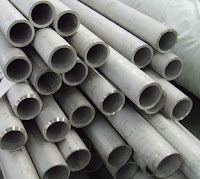The Welding & Fabrication of Hastelloy C22
Hastelloy C22 alloy seamless and welded pipe
The welding & fabrication characteristic of hastelloy C22
Hastelloy C22 alloy/ UNS N06022 is very amenable to the Gas Metal Arc (GMA/MIG), Gas Tungsten Arc(GTA/TIG), and Shielded Metal Arc (SMA/Stick) welding processes. Matching filler metals are available for these processes, and welding guidelines are given in Brochure H-2010: Fabrication of HASTELLOY Corrosion-Resistant Alloys.
Wrought products of C22 are supplied in the Mill Annealed condition, unless otherwise specified. This Solution annealing procedure has been designed to optimize the alloy's corrosion resistance and ductility. Following all hot forming operations, the material should be reannealed, to restore optimum properties. The alloy should also be reannealed after any cold forming operations that result in an outer fiber elongation of 7% or more. The annealing temperature for C22 alloy is 1121℃(2050℉), and water quenching is advised (rapid air cooling is feasible with structures thinner than 10mm/0.375in.). A hold time at the annealing temperature of 10 to 30 minutes is recommended, depending on the thickness of the structure(thicker structure need the full 30 minutes). More details concerning the heat treatment of C22 are given in "Fabrication of Hastelloy Corrosion-Resistant Alloys".
C22 alloy can be hot forged, hot rolled, hot upset, hot extruded, and hot formed. However, it is more sensitive to strain and strain rates than the austenitic stainless steels, and the hot working temperature range is quite narrow. For example, the recommended start temperature for hot forging is 1232℃(2250℉) and the recommended finish temperature is 954℃(1750℉). Moderate reductions and frequent reheating provide the best results, as described in "Fabrication of Hastelloy Corrosion-Resistant Alloys". This reference also provides guidlines for cold forming, spinning, drop hammering, punching, and shearing. The alloy is stiffer than most austenitic stainless steels, and more energy is required during cold forming. Also, C22 alloy work hardens more readily than most austenitic stainless steels, and may require several stages of cold work, with intermediate anneals.
While cold work does not usually affect the resistance of C22 to general corrosion, and to chloride-induced pitting and crevice attack, it can affect resistance to stress corrosion cracking. For optimum corrosion performance, therefore, the reannealing of cold worked parts(following an outer fiber elongation of 7% or more) is important.



















